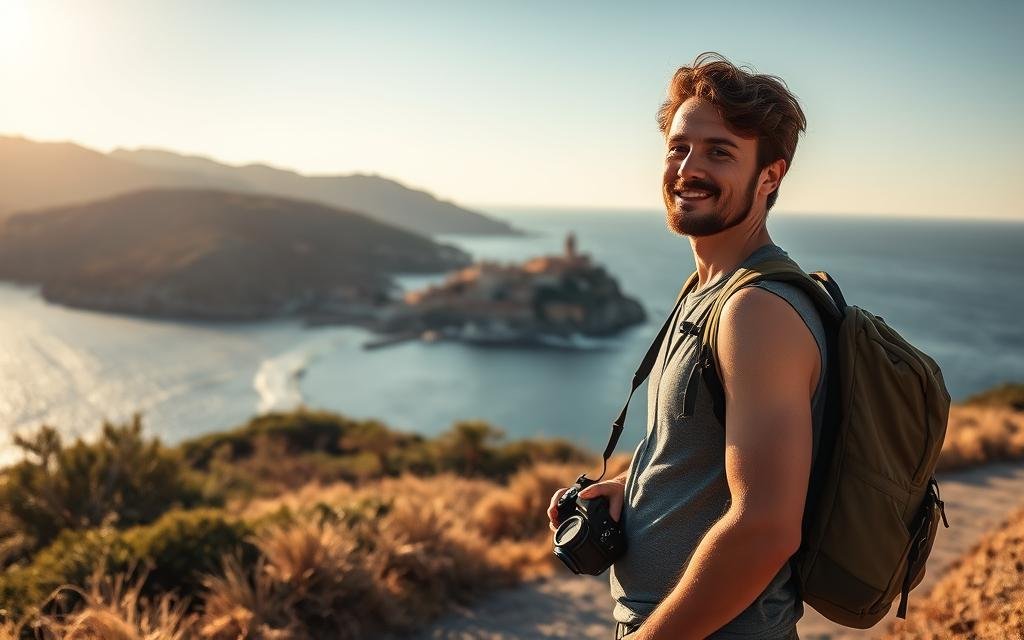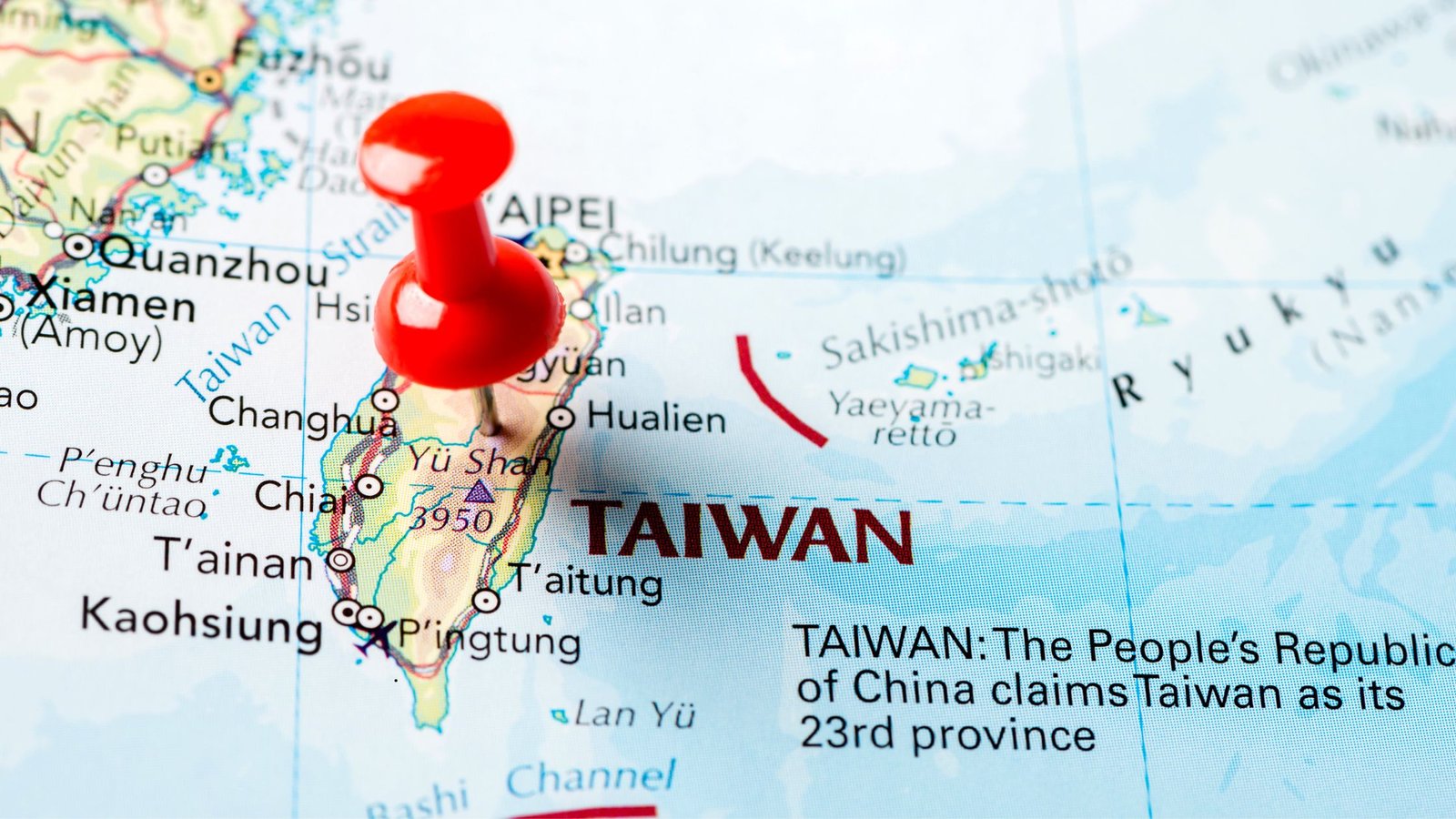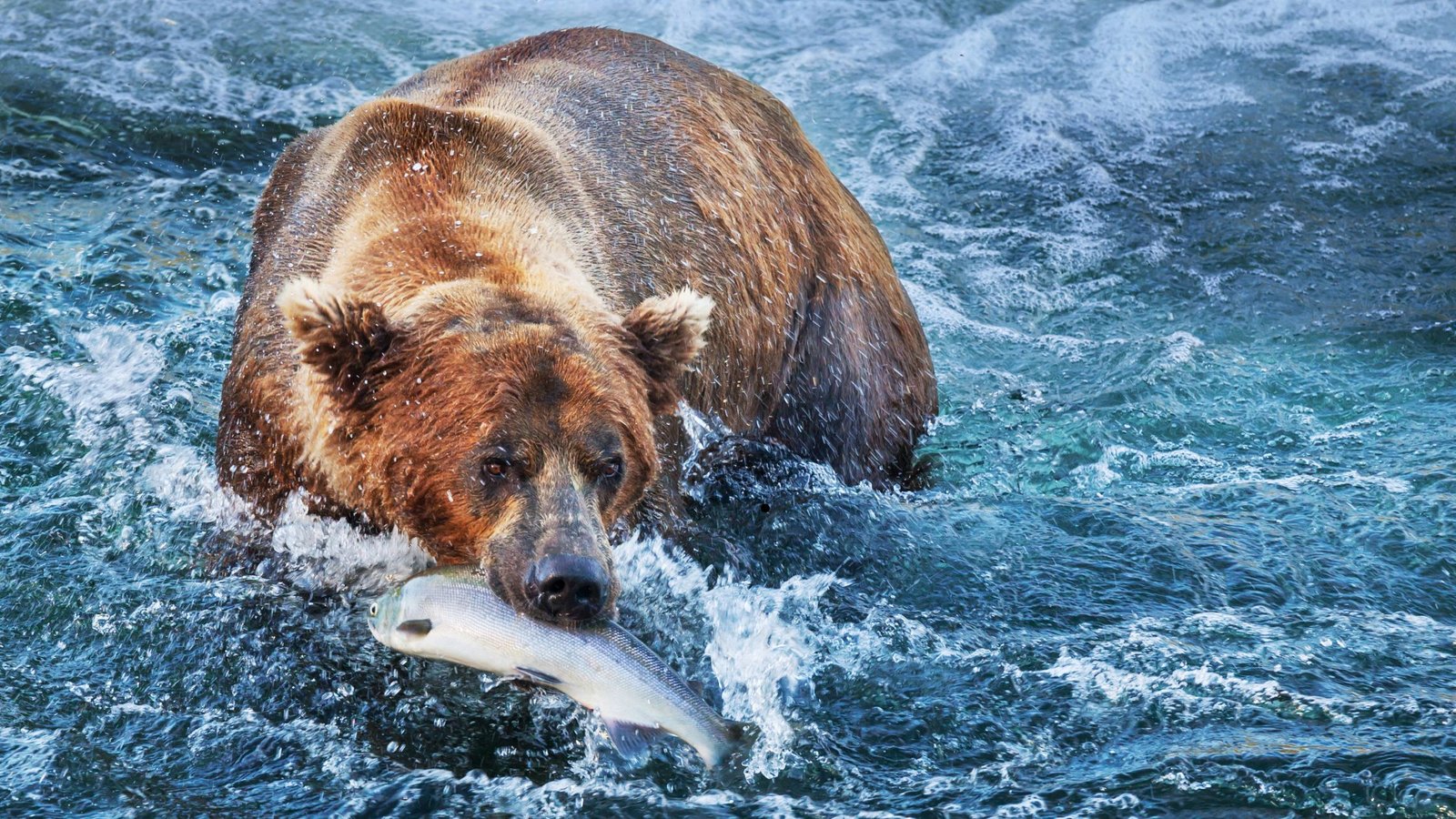Ever thought about traveling alone and staying safe? Many solo travelers, including women, wonder about this. I’ve learned that knowing the right safety tips is key to a safe trip. This guide will help you understand how to protect yourself while exploring new places.
Safety is not just an afterthought. It starts with careful planning and taking the right precautions. By being prepared and aware, you can enjoy your solo journey without worry.
Key Takeaways
- Thorough research about your destination enhances solo travel safety.
- Understanding local customs is vital for solo female travel safety.
- Emergency contacts are essential for any travel plan.
- Packing the right safety gear boosts confidence while traveling alone.
- Staying connected can effectively safeguard my journey.
- Being aware of my surroundings reduces risks during solo adventures.
Planning My Trip with Safety in Mind
Effective solo travel planning starts with thorough preparation. I research destinations to learn about them. Knowing about crime rates and local customs is key to staying safe.
Researching My Destination
I look for reliable sources like government advisories and travel blogs. These give me safety tips and insights. I also watch videos and read other travelers’ stories to prepare better.
Understanding Local Customs
Knowing local customs is vital. Each place has its own traditions and norms. I learn about these to avoid offending anyone and make connections.
Knowing Emergency Contacts
Having emergency contacts is essential. I list local emergency numbers and my embassy’s contact. This way, I can get help if needed.
Packing Essentials for Solo Travel
When you travel alone, packing right is key. Choosing the right luggage is important for moving around easily. You also need safety gear and to keep your documents in order. These steps help you travel safely and with confidence.
Choosing the Right Luggage
I look for luggage that’s light, strong, and easy to roll. Roller bags or backpacks work well for different trips. A bag with lots of pockets keeps things tidy, and light fabric makes it easier to carry.
Buying anti-theft backpacks is a smart move for crowded places.
Essential Safety Gear
Having safety gear is a must for a good trip. I pack things like:
- Pickpocket-proof clothing
- Portable door locks
- Whistles for emergencies
- Personal alarms
This gear makes me feel safer and prepares me for surprises.
Documents I Should Keep Safe
Having the right travel documents is essential. I make sure to have my passport, visa, and travel insurance with me. It’s smart to have digital copies and a physical backup in my luggage.
A travel wallet keeps everything organized. It makes it easy to find what you need and reduces the chance of losing something important.
Staying Connected While Traveling
It’s important to stay connected while traveling for safety and convenience. I use travel communication apps to talk to friends, family, and locals. Reliable Wi-Fi is key to keep me informed and share important updates. I also share my itinerary with loved ones to keep them in the loop.
Using Communication Apps
Travel apps offer messaging, calling, and video chats without high costs. Apps like WhatsApp, Viber, and Skype are great for staying in touch. They need internet, so finding good Wi-Fi is essential. This way, I can chat with others, get local tips, or call for help if needed.
Finding Reliable Wi-Fi
Finding good Wi-Fi in new places can be tough. I look for cafes, hotels, and public spots with free Wi-Fi. Some places might ask for a purchase to use their network. I have a plan for these situations.
Staying online helps me use maps, book rides, and find cool spots. A few Wi-Fi finder apps make it easier to stay connected.
Sharing My Itinerary
Sharing my itinerary makes me feel safer. I tell trusted friends or family where I am and what I’m doing. This way, they know my location, which is helpful in emergencies.
Using apps for easy itinerary sharing makes my trips better. It gives me peace of mind.
Trusting My Instincts
It’s important to trust my instincts when I’m traveling alone. I’ve learned to read body language to understand others’ non-verbal signals. This helps me avoid uncomfortable situations by recognizing danger signs like aggressive behavior or avoiding eye contact.
Knowing these signs keeps me safe. It lets me react quickly to different situations. This way, I can stay safe while exploring new places.
Reading Body Language
Being aware of body language helps me understand others’ intentions. Small changes in how someone stands, looks, or moves can mean a lot. For example:
- A relaxed stance may indicate comfort and friendliness.
- Crossed arms or tense shoulders often signal defensiveness or hostility.
- Excessive fidgeting might suggest that someone is feeling anxious or uncomfortable.
This skill helps me stay safe in places I don’t know well.
Recognizing Uncomfortable Situations
It’s also key to trust my instincts about feeling uneasy. I watch for signs like:
- A sudden feeling of anxiety in a crowded area.
- Sense of being watched or followed.
- An interaction that feels overly intrusive or aggressive.
If I notice these danger signs, I put my safety first. I take steps to get out of risky situations. This way, I make smart choices and travel with more confidence.
Choosing Accommodations Wisely
Finding the right place to stay is key for a good trip. I look for safe hotels or hostels. This way, I can relax and feel secure.
Finding Safe Hotels or Hostels
I search for places with strong security. I want hotels or hostels with secure entry, in-room safes, and 24-hour front desk. A safe location is also important.
Knowing I have a safe place to stay lets me explore with confidence.
Checking Reviews and Ratings
Reading hostel reviews is important for me. I look for comments on safety, cleanliness, and atmosphere. Ratings help me see if a place fits my needs.
I focus on recent reviews to get a true picture of the place.
Opting for Shared Accommodation Safety
Shared accommodations, like hostels, offer social benefits. But, safety is a must. I check their policies on visitors and belongings.
Understanding the layout helps me keep an eye on my stuff. Talking to other travelers can also teach me about safety.
Navigating Public Transportation
Learning about public transportation safety is key for solo travelers. Knowing the local transit systems makes my trips better. It’s important to understand the routes and schedules to travel safely.
I always stay alert while traveling. This helps me avoid dangers and stay safe on my way.
Understanding Local Transit Systems
Knowing the public transportation options in my destination boosts my confidence. It’s easier to find safe routes and avoid risky areas. I research buses, trains, and subways to pick the best for me.
Staying Alert During Travel
Staying focused on public transportation is essential. Paying attention to others and my surroundings helps me spot dangers. I sit near exits and avoid distractions like phones to stay ready.
Booking Transportation in Advance
Booking my transport ahead of time reduces stress. It makes my travel safer and more predictable. Planning my routes in advance makes my journey smoother and safer.
Being Aware of My Surroundings
Being aware of my surroundings is key to staying safe while traveling. It helps me spot risks and handle situations well. By keeping a low profile and avoiding distractions, I stay alert and travel more securely.
Keeping a Low Profile
Traveling, I blend in with the locals to stay safe. I avoid wearing flashy things that might draw attention. This way, I seem less like a tourist and more like a local, making me less of a target.
Avoiding Distractions
In today’s world, distractions are everywhere. When exploring, I limit my phone use to only what’s necessary. Being alert is important; I focus on my surroundings, not my phone. This helps me notice anything out of the ordinary.
Using Situational Awareness Techniques
Using situational awareness means watching my environment and the people in it. I scan crowds, keep an eye on my surroundings, and plan escape routes. These strategies help me spot dangers and react quickly, keeping my travels safe.
| Technique | Description | Benefit |
|---|---|---|
| Blending In | Dressing like locals | Reduces attention from others |
| Limiting Phone Use | Not using my phone while walking | Increases focus on surroundings |
| Scanning Crowds | Regularly surveying nearby people | Helps identify possible threats |
| Assessing Routes | Planning exits in case of trouble | Enhances preparedness for emergencies |
Managing Money Safely
When I travel alone, managing my money is key to staying safe. I plan how to use cash and cards and keep my valuables safe. This helps avoid theft or loss. I also keep an eye on my accounts for any sudden changes. Here are some tips for handling money while traveling.
Using Cash or Cards Wisely
It’s important to have the right amount of cash and cards. I carry local currency for small buys where cards aren’t accepted. Using cards with no foreign fees is smart. I choose ATMs in safe, busy spots to avoid scams.
Keeping My Valuables Secure
Keeping valuables safe is a must. I use a money belt or hidden pouch for important stuff. I also have digital backups of important documents. Storing extra cash or electronics in a safe place helps prevent theft.
Monitoring My Accounts Regularly
Checking my bank accounts often helps me catch fraud fast. I make it a routine to review my statements while traveling. Setting up alerts from my bank keeps me updated. These steps help me control my money while traveling.
| Cash vs. Cards | Advantages | Disadvantages |
|---|---|---|
| Cash | Widely accepted, no transaction fees | Risk of loss or theft, not easily replaceable |
| Credit/Debit Cards | Convenience, protections against fraud | Possible foreign transaction fees, not accepted everywhere |
By following these tips, I stay financially safe while traveling. This lets me enjoy my trips more without worry.
Meeting New People Safely
Traveling lets me meet new people and make friends. But, I must stay safe. I choose safe places to meet others, like tours or group events.
Choosing Social Activities
I pick activities that are fun but safe. Group tours and local events are good choices. They’re in public places, making them safer.
I look for places where everyone seems friendly. But, I’m careful around strangers. This way, I stay safe while making friends.
Trusting My Gut Feelings
My instincts are very important. If something feels off, I leave. This keeps me safe and happy.
I watch for signs that something might not be right. If I feel unsure, I can leave. This helps me stay safe and enjoy my travels.
Setting Personal Boundaries
It’s key to know what I’m comfortable with. I tell others how much I want to share. This keeps me safe and respected.
Being clear about my limits helps me enjoy meeting people. I don’t feel pushed or scared. It’s all about being safe and happy.
Handling Emergencies on the Road
Being ready for emergencies while traveling is key for my safety. Knowing what to do in dangerous situations helps a lot. It’s also important to know about local authorities and embassy connections.
Knowing What to Do If I'm in Danger
If I’m in danger, staying calm is the first step. I should look for escape routes and safe places. Calling local authorities right away is also important.
Having emergency contacts saved in my phone is very helpful. It gives me quick access when I need it most.
Identifying Local Authorities
Before I travel, I need to know the local emergency numbers. I also need to know where police stations or public offices are. This info is key for staying safe.
I make a small card with this info to carry with me. It’s easy to access and helps me feel more secure.
Connecting with My Embassy
In serious emergencies, talking to my embassy is essential. I should register my travel plans with them before I leave. This way, they know I’m there and can help faster.
My embassy can assist with lost passports, legal problems, or civil unrest. Keeping their contact info handy is important. It lets me reach out quickly if I need to.
Importance of Travel Insurance
Travel insurance is key for solo travelers to protect against unexpected issues. Knowing how to pick the right policy and what it covers brings peace of mind. Understanding the claims process prepares you for any help you might need.
How to Choose the Right Policy
Finding the right travel insurance can be tough with so many choices. I focus on what’s covered and what I need. I look for strong medical coverage, trip cancellation, and personal liability. Comparing different options helps me make a smart choice.
Understanding Coverage Details
It’s vital to understand what your travel insurance covers. Each policy has its own rules and limits. I check what’s included, like medical costs, lost items, and trip delays. Knowing this helps avoid surprises on my trip.
What to Do in Case of Claims
If something unexpected happens, knowing how to handle claims is a big help. I keep all important documents ready and easily found. By contacting my insurance quickly and following their steps, I get the help I need fast.
| Coverage Type | Importance | Recommended Action |
|---|---|---|
| Emergency Medical Coverage | Covers medical expenses abroad | Choose plans with high limits |
| Trip Cancellation | Reimburses non-refundable expenses | Understand the conditions for cancellations |
| Personal Liability | Covers claims from accidents | Include this coverage for added security |
Concluding My Journey Mindfully
Reflecting on my solo travel, I realize the importance of pausing to learn. These experiences shape my view of different cultures and highlight the need for safety. I’ve learned to cherish the small moments and connections with locals and travelers, making my journey richer.
Sharing my safety tips with others is key. It helps fellow travelers feel empowered and builds a community. By sharing what worked and what didn’t, I aim to inspire confidence in others. This way, we all stay safe while exploring.
Looking ahead, I’m excited for my next adventure. The lessons from my travels will shape my future trips. I’ll choose safer places and activities that align with my values. This knowledge will help me create even more meaningful experiences.


